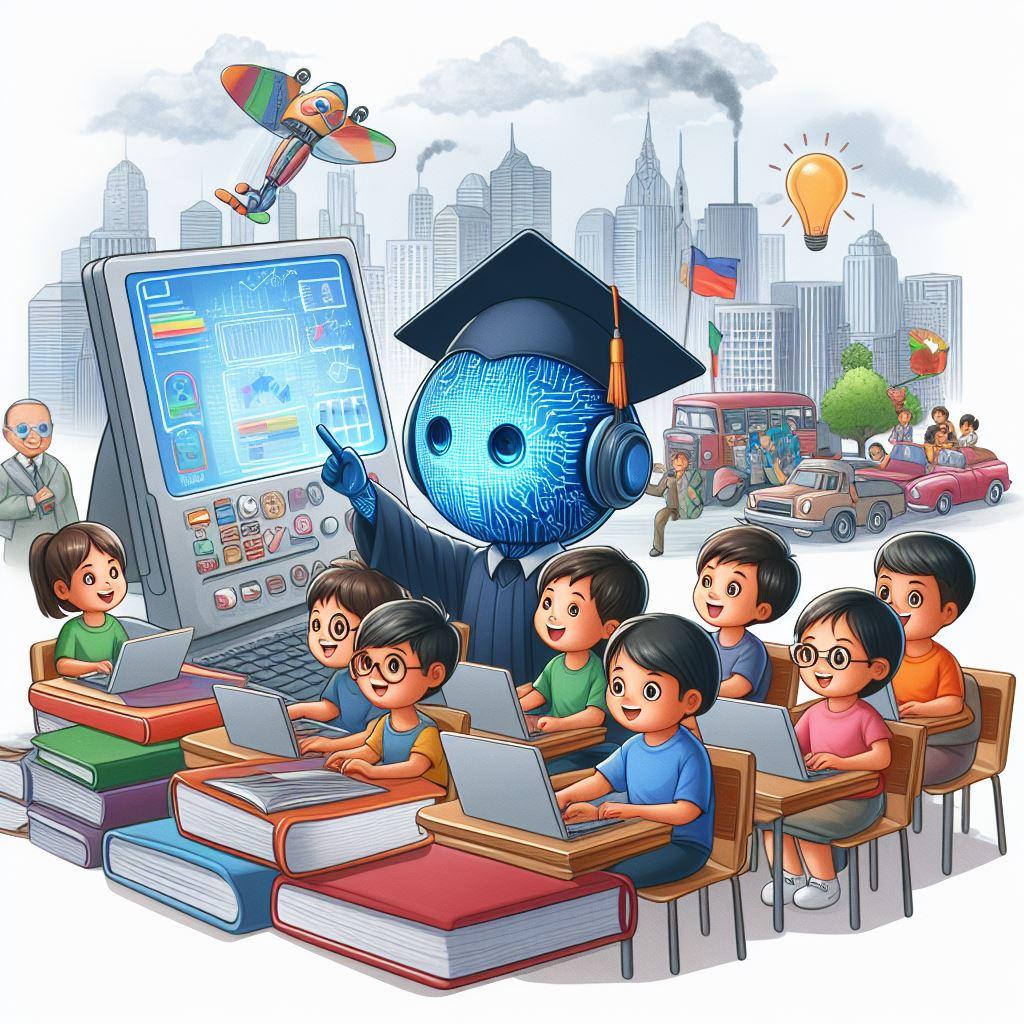How AI Transforms Education for Students with Disabilities: Key Benefits and Innovations
Introduction: Empowering Inclusive Education Through AI
In recent years, Artificial Intelligence (AI) has transitioned from being a buzzword to becoming a powerful tool with real-life applications—particularly in the field of education.One of the most remarkable impacts of AI is its ability to transform learning experiences for students with disabilities. From personalized learning platforms to smart assistive technologies, AI-driven innovations are breaking down barriers and opening up new possibilities for inclusive, equitable education. This article explores how AI is redefining special education, highlighting key benefits, innovative solutions, and practical tips for educators and parents.
Key Benefits of AI in Education for Students with Disabilities
The integration of AI in education is driving significant advancements, providing students with disabilities access to adaptive learning tools and empowering educators to better support diverse learning needs.Here are some of the most critical benefits:
- Personalized Learning experiences: AI algorithms analyze individual learning patterns to deliver customized content, pace, and instructional methods tailored to each student’s strengths and challenges.
- Enhanced Accessibility: Tools such as voice recognition, text-to-speech, and real-time transcription make resources and classrooms more accessible for students with visual, auditory, or motor impairments.
- Real-Time Feedback: AI-powered platforms offer instant feedback, helping students to track and improve their performance while enabling educators to intervene promptly.
- Automated Administrative Support: AI technologies streamline administrative tasks such as grading and progress monitoring, allowing educators to dedicate more time to direct instruction and support.
- Improved Engagement: Interactive AI applications, such as gamified learning, can increase motivation and engagement for students who might struggle with traditional teaching methods.
Major AI Innovations Revolutionizing Special Education
Recent AI innovations have brought forward cutting-edge tools and solutions, specifically designed to meet the unique needs of students with disabilities. below, we highlight some of the most impactful advancements:
1. Adaptive Learning Platforms
Platforms like DreamBox,Smart Sparrow,and Khan Academy utilize AI to create individualized learning paths. These systems adapt in real-time to student responses, ensuring content stays appropriate and challenging.
2. Speech Recognition & Dialog Aids
AI-powered speech recognition applications allow students with speech or motor impairments to communicate more freely in the classroom. Tools such as Google’s Live Transcribe or Speechify convert spoken language to text instantly.
3. Text-to-Speech & Visual Assistance Technologies
Text-to-speech (TTS) solutions,like NaturalReader and Read&Write,help students with dyslexia or visual impairments by reading digital content aloud. AI-driven visual assistance devices such as OrCam MyEye provide audio descriptions to users, enhancing their independence.
4. AI-powered Tutoring Systems
Clever tutoring systems (ITS) use AI to simulate one-on-one instruction and adapt feedback to student progress. This is particularly beneficial for learners who need extra time or alternative teaching strategies.
5. Predictive Analytics for Early Intervention
AI can analyze behavioral and academic data to identify students at risk of falling behind. Early detection allows educators and families to provide targeted support before challenges escalate.
Case Studies: AI in Action for Students with Disabilities
To illustrate the transformative power of AI in special education, let’s look at two real-life case studies:
-
Case Study 1: AI-Powered Reading Support for Dyslexic Students
In a public school district in Texas, the implementation of AI-driven text-to-speech software helped over 100 students with dyslexia access grade-level texts. Teachers reported significant improvements in reading comprehension and student confidence within one semester.
-
Case Study 2: Assistive AI technologies for Visually Impaired Learners
A London-based inclusive classroom adopted OrCam MyEye devices,enabling visually impaired students to independently read printed materials and navigate campus spaces. These students exhibited increased participation and self-reliance.
Practical Tips for Educators and Parents
Harnessing the power of AI in education requires thoughtful planning and a willingness to explore new technologies. Here are practical strategies for maximizing the benefits of AI for students with disabilities:
- Stay Informed: Regularly research new AI tools and platforms designed for accessibility and inclusive education.
- Communicate with Students: Involve students in technology selection. Assess comfort levels and personalize tools to fit individual needs.
- Provide Training: Ensure all stakeholders—students, parents, and educators—receive training to maximize the effectiveness of AI technologies.
- Monitor and Evaluate: Continuously track progress and solicit feedback to fine-tune the use of AI-driven resources.
- Collaborate: Partner with special education experts, IT professionals, and support staff to ensure robust integration and troubleshooting.
Frist-hand Experiences: Empowerment Through AI
Nothing speaks more powerfully than the voices of those directly impacted by AI in education.Many students with disabilities report profound changes in their daily school life:
“With my tablet and speech-to-text app, I can write essays without feeling left behind. It’s like the technology fills the gap when my words get stuck.”
– Emily, 9th grade student with dysgraphia
“AI gives my child a voice in class that wasn’t possible before. Watching him answer questions using his device is incredibly moving.”
– Parent of a non-verbal student
Challenges and Considerations for AI in Special Education
While the promise of AI in special education is immense, there are challenges to address:
- Privacy & Security: Protecting sensitive data must be a top priority when implementing AI platforms.
- Digital Divide: Equitable access to AI technologies is crucial to prevent further inequalities in learning outcomes.
- Emotional Intelligence: AI tools currently lack human empathy; combining technology with compassionate teaching remains essential.
- Teacher Training: Professional advancement is needed to ensure educators can effectively leverage AI tools.
Conclusion: The Future of AI and Special Education
The integration of AI in education is reshaping the landscape for students with disabilities, making learning more accessible, personalized, and engaging.As technology evolves,the potential for even greater inclusivity grows,promising a future where every student’s unique needs are met. By embracing innovation, fostering collaboration, and advocating for equitable access, we can ensure that AI-driven education becomes a powerful catalyst for empowerment and success among all learners.
For parents, educators, and school administrators, the journey towards inclusive, AI-enabled classrooms is within reach. With careful implementation and a focus on student-centric solutions, the possibilities are boundless.

